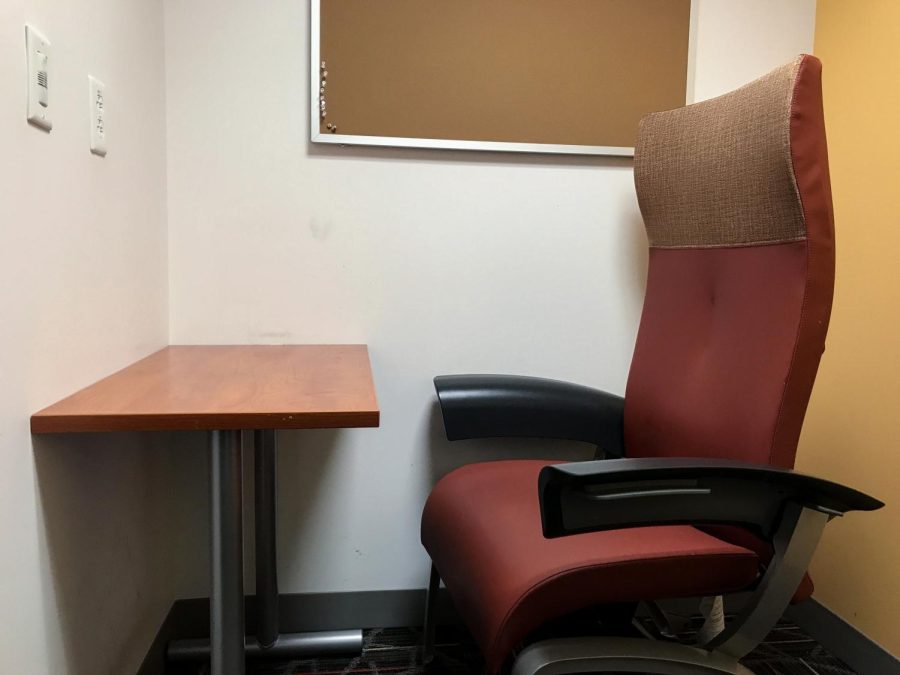Campus lactation rooms cultivate safe space for new mothers
February 5, 2019
Michael Indriolo
Social Services Reporter
Kent State’s Office of the University Architect recently partnered with the Women’s Center to build and promote lactation rooms on campus. Women’s Center director Cassandra Pegg-Kirby and space planning manager Charmaine Iwanski strengthened the project with collaboration and personal experience.
“In the work that we do to make change, I think you have to break down silos and work across areas,” Pegg-Kirby said. “So this is really working with the University Architect’s Office because they’re the ones that have the ability to impact the change.”
Although the project began in 2010, it needed to be reexamined because the rooms’ quality standards are not universally maintained throughout campus.
“Over time, some of those spaces haven’t been utilized or they’ve become a storage closet,” Pegg-Kirby said. “So we have gone back in and we’re going to meet again to look at where they’re supposed to be on campus, and if they’re set up in a way that’s best practice.”
Best practice means considering details like updated equipment, proximity to sinks, privacy, medical-grade chairs, outlets and Wi-Fi connection. Such comforts that may seem simple are essential to the new mothers using these rooms, Pegg-Kirby said.
Iwanski, who spearheaded the project after her predecessor left, pointed out those details after using one of the rooms herself. She’s since designed nearly 20 lactation rooms across campus.
“They’re used often because I think there’s more of a trend now for the whole natural, ‘feed my baby’ movement,” Iwanski said. “It’s more accepted.”
Although the Health Care and Education Reconciliation Act of 2010 compelled all employers to provide time and space for new mothers to nurse, Iwanski said the project’s significance extends beyond legal compliance.
“I think it’s important because it shows that your employer is supporting you personally,” she said. “It’s a good morale booster.”
That act states that employers are required to provide nursing mothers with reasonable break time to express breast milk for the first year following the birth of a child. A room that must also be provided and shielded from view, free from intrusion by the public. The provided room also cannot be a bathroom.
That support goes a long way for new mothers trying to balance their child’s needs with social pressures, Iwanski said.
“You need to feed your baby,” she said. “It’s already stressful, breastfeeding in itself is a very stressful process because there’s a weird stress in comparison; the mom culture is a lot different now with social media, and there’s a lot of pressure to breastfeed.”
According to Iwanski, there’s a lot of judgement among mothers who favor different nurturing techniques. Those who favor a natural, humanized approach seem to think those who rely heavily on specialized medical assistance are wrong, or vice versa.
“That first year that you’re raising, I think you’re more susceptible to those voices, those outside factors,” she said. “When you’re dealing with a baby and no sleep, it becomes very ostracizing, there’s pressure there.”
The lactation rooms on campus are like a safe space for new mothers, free from those voices and outside factors, Iwanski said. Navigating motherhood can be difficult, but the consideration for these lactation rooms’ fine details helps ease that stress.
With Iwanski’s experience, Pegg-Kirby’s partnership and overwhelming support from the architect’s office, the lactation room project has recently surge.
“I think that’s how you impact change,” she said. “You find ways to work together, and you find ways to incorporate the voices of the people who are impacted the most.”
Contact Michael Indriolo












